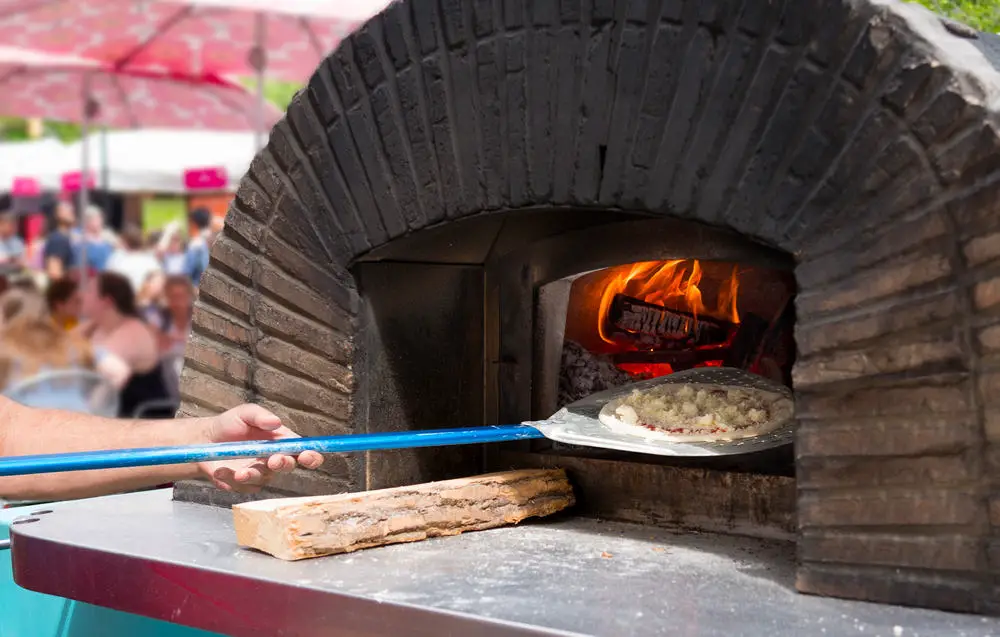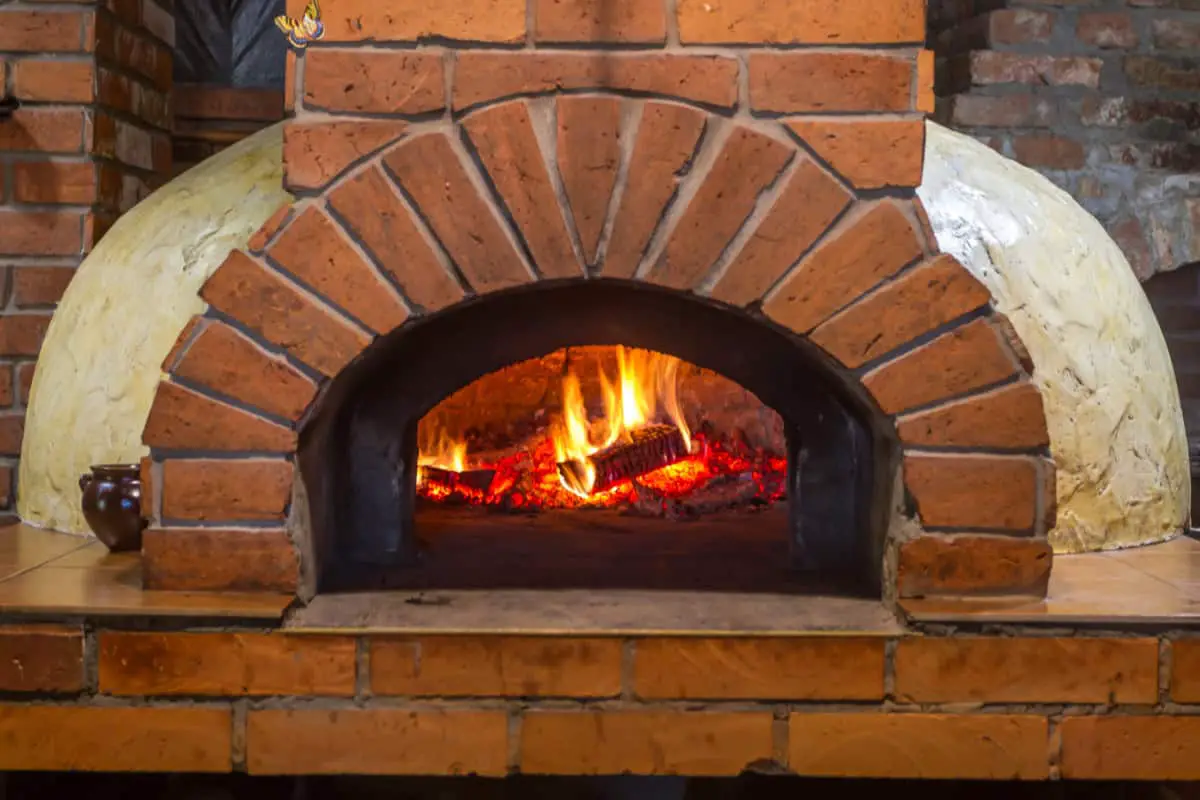If you accidentally dropped your pizza dough while trying your hand at tossing, you might wonder if the heat from the pizza oven would be enough to kill any germs that might have transferred from the floor to the food? Or should you rather throw it out and start over?
The Centers for Disease Control and Prevention (CDC) states that temperatures above 165 °F (74 °C) will kill most germs; pizza ovens typically reach between 800 °F and 900 °F (426 °C and 482 °C); not even hyperthermophilic bacteria could survive these conditions.

We know the pizza would come out germ-free in just a matter of minutes, but will this be the same for indoor pizza ovens as well? And what if you’re using your pizza oven as a slow cooker or a smoker at a lower temperature?
Do All Pizza Ovens (And Cooking Methods) Kill Germs?
Hyperthermophilic bacteria can withstand a temperature of 235° F (113 °C) for about an hour. While this sounds a little scary, that is about the limit for many organisms, and the chances of surviving at 900°F are non-existent – though we don’t think cooking your pizza at such extreme heat is the way to go.
Indoor pizza ovens would not reach the same temperature as their predecessors; however, they can still produce heat above 600°F, and germs won’t survive this either. It gives purification by fire a new meaning.
According to the CDC, these are the germs that can make us sick:
- Norovirus
- Salmonella
- Clostridium perfringens
- Campylobacter
- Staphylococcus aureus (Staph)
- Clostridium botulinum (botulism)
- Listeria
- Escherichia coli (E. coli)
- Vibrio
Would Slow Cooking In An Outdoor Pizza Oven Kill Germs?
Slow cooking methods use lower heat but more time to cook dishes like soups, casseroles, or stews. If you don’t have a slow cooker tucked in the cupboard, but want to attempt this method in your outdoor pizza oven, you’ll be pleasantly surprised at how easy this is.
The temperature range for slow cooking is generally between 170 °F and 280 °F (77 °C and 138 °C), this means that even at its lowest heat, it will kill most germs that are harmful to our health.
Are Smoking Temperatures High Enough To Kill Bacteria?
Your pizza oven is highly versatile and can be used for cold, warm, or hot smoking. Now, we know what temperature kills most bacteria. The CDC also provides a handy guide on the safe minimum cooking temperatures for various foods, with 165 °F being the highest temperature needed to cook safely.
- Poultry, casseroles, and leftovers are safe at 165 °F (74 °C)
- Ground meats at 160 °F (71 °C)
- Fish and red meats at 145 °F (62 °C)
The average temperature for the different methods of smoking is:
- Hot is between 126 °F and 176 °F (52 °C and 80 °C)
- Warm is between 77 °F and 104 °F (25 °C and 40 °C)
- Cold is between 68 F° and 86 °F (20 °C and 30 °C)
Only hot smoking in a pizza oven with temperatures between 165 °F (74 °C) and 176 °F (80 °C) will kill most bacteria that can cause food poisoning. It usually is safe for most healthy individuals to eat food that has been smoked and not considered fully cooked.
However, pregnant women should avoid eating smoked foods because moms-to-be are more likely to suffer dire consequences if exposed to the bacteria (Listeria monocytogenes) that cause listeria.
Does Food Hygiene Matter When You Use A Pizza Oven?
Many people will be appalled if they step foot into the preparation areas and see the chefs touching the food with bare hands. But just how clean is wearing gloves really?
Do workers frequently pull on a fresh pair, or are they used for an entire shift?
The problem with wearing gloves while preparing food is that it became equal to washing hands, where the proper procedure would be to wash your hands before pulling on the gloves and then again when you remove them.
Sometimes you’ll notice a worker leave the preparation area with their hands still covered in latex. That defies the purpose. The gloves aren’t some magical bacteria-killing tool; germs can still be spread around even if chefs wear gloves.
Now, let’s say you chucked the gloves, washed your hands, perhaps didn’t do an excellent job of it, and there might still be some germs on your hands. Is this a cause of concern when you cook a pizza in an oven of 450°F to 500°F? Not really because the germs will not survive it.
However, this should never be an excuse for lousy hygiene when preparing food; they might have to prepare a salad with those germ-infested hands after the pizza. Proper handwashing techniques or sterilization are the only way to ensure your hands stay free of harmful bacteria.
Can Germs Grow In Pizza Ovens?
It is not very likely that germs would be an issue in a pizza oven; even if some bacteria made its way into the oven, as soon as you start the fire and it reaches a specific temperature, it will not make the journey to your food.
However, you should be careful to leave food, like leftovers, in the oven at temperatures below the safety standard; this can be dangerous. Always reheat food thoroughly to ensure everything that shouldn’t be alive is dead.
Should I Still Clean My Pizza Oven?
While fire does kill whatever is lurking in a pizza oven, you should still make sure it is clean – just like you wouldn’t bake a lasagne in an oven caked with grease and grime, you should cook food in a dirty space. Click here for tips on how to clean a pizza oven properly.
Conclusion
If you use your pizza oven at 165°F (74 °C) and above, you don’t have to worry about any bacteria making it out alive. Be careful with the smoking process in your pizza oven, especially cold-smoked methods, as the temperature might not be enough to kill certain harmful germs.
